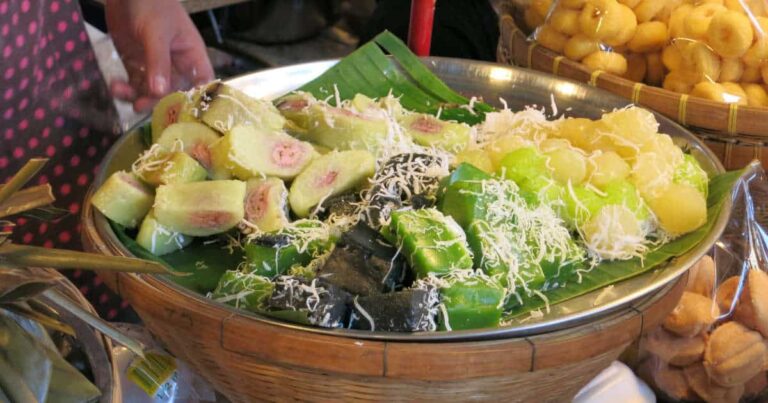Introduction: Tajik Cuisine and Desserts
Tajikistan, a landlocked country in Central Asia, boasts of a rich culinary tradition characterized by a fusion of Persian, Uzbek, Russian, and Chinese influences. The country’s cuisine is marked by the use of spices, herbs, and dairy products, combined with meat, vegetables, and grains. When it comes to desserts, Tajikistan has a lot to offer, with its unique sweet treats, ranging from pastries to puddings and everything in between.
Traditional Tajik Desserts: Overview
Tajikistan’s traditional desserts are an integral part of the country’s culinary heritage, with recipes passed down from one generation to another. Some of the most popular traditional desserts include shirini tojiki, a sweet cake made with flour, sugar, and oil, and garnished with raisins and nuts. Another classic sweet treat is halva, a dense and chewy confection made with sesame seeds and sugar syrup. Pahlava, a sweet pastry filled with walnuts and honey, and shakarbura, a fried pastry filled with sugar and nuts, are also among the favorites.
Pamiri Desserts: Sweet Treats from the Mountainous Region
The Pamiri people, who live in the mountainous region of Tajikistan, have their own unique desserts that reflect their cultural heritage and the harsh environment they inhabit. Pamiri desserts are often made with fruits and nuts that grow in the region, such as apricots, mulberries, and almonds. One of the most popular Pamiri sweets is gulcho, a pastry filled with a mixture of crushed apricots, sugar, and walnuts. Another Pamiri dessert is nishallo, a sweet pudding made with semolina, sugar, and cardamom, and garnished with almonds and raisins.
Osh Markanda: A Unique Dessert from Tajikistan’s Capital
Osh Markanda is a dessert that originated in Tajikistan’s capital, Dushanbe, and is now popular throughout the country. It is made by boiling wheat berries until soft, then adding sugar and frying the mixture in oil until it turns golden brown. The result is a crunchy and sweet snack that is often served with tea or coffee. Osh Markanda is a unique dessert that showcases Tajikistan’s creativity and ingenuity in using local ingredients to create delicious treats.
Halva: A Popular Sweet Snack in Tajikistan
Halva is a popular sweet snack in Tajikistan that is loved by both children and adults. It is made by grinding sesame seeds and mixing them with sugar syrup until a thick paste is formed. The mixture is then cooked over low heat until it thickens and becomes dense. Halva can be flavored with various spices like cardamom, cinnamon, or vanilla, and is often garnished with nuts or dried fruits. It is a favorite dessert that is typically served during holidays and special occasions.
Conclusion: Tajik Desserts Worth Trying
Tajikistan’s desserts are a reflection of the country’s rich cultural heritage and culinary traditions. From the classic shirini tojiki to the unique Pamiri gulcho, Tajikistan has a lot to offer when it comes to sweet treats. Whether you are in the mood for a traditional dessert or want to try something new, Tajikistan’s desserts are worth exploring and savoring.





